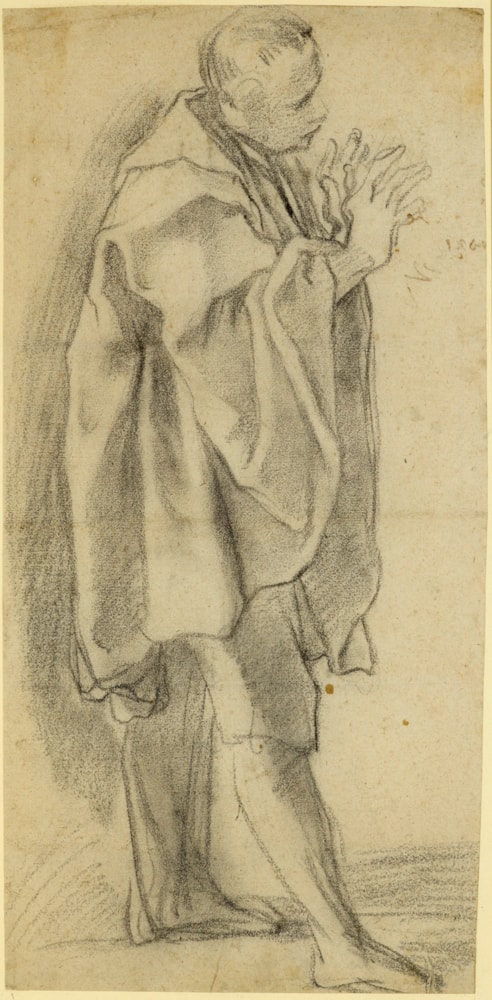
Ferrau FENZONI
Faenza 1562 - Faenza 1645
Biography
Among the most interesting and distinctive, albeit lesser-known, artists of the late 16th and early 17th century, Ferraù Fenzoni arrived in Rome as a young man in the early 1580’s. Between 1587 and 1591 he worked on several projects in the Vatican, notably at the Scala Santa, for which he painted a fresco of Moses and the Brazen Serpent in 1587, as well as on the decoration of the Biblioteca Sistina and the apartments of Pius V. Fenzoni also painted frescoes for the Lateran Palace and the Roman churches of Santa Maria Maggiore, Santa Maria in Trastevere and the Chiesa Nuova. Between 1593 and 1599 he worked in the Umbrian hill town of Todi, where he was responsible for the illusionistic decoration of the bishop’s palace as well as several altarpieces and the extensive mural decoration of the Duomo. Although much of Fenzoni’s work in the cathedral at Todi has been lost, the large and impressive fresco of The Last Judgment on the inner façade, completed in 1596, remains as a splendid testament to the artist’s skill and vision.
Fenzoni returned to his native Faenza in 1599 and worked there for the remainder of his long career, painting significant works for several churches in the city over the next thirty years. Among his most important works of this period are a painting of The Pool of Bethesda, painted around 1600 for the confraternity of San Giovanni Decollato, and the decoration of the Borromeo chapel in the cathedral, completed in 1614. He also sent paintings to churches elsewhere in Romagna, notably in Bagnacavallo, Castel Bolognese and Cesena. One of his last significant paintings was an altarpiece of The Deposition of c.1622, painted for the artist’s own chapel in the church of Santa Cecilia in Faenza. By the end of the 1620’s, however, Fenzoni seems to have almost stopped painting altogether, due to the effects of poor sight.
According to a local biographer, Fenzoni continued to draw well into his old age; he ‘drew continuously in pen; and in that way he gave to know his talent and his taste for the profession.’ He is also known to have received commissions for highly finished pen drawings, produced as autonomous works of art. As one modern scholar has noted, ‘drawing was for Fenzoni a powerful means of expression’ and the artist is arguably better known today as a draughtsman than as a painter. Some 160 drawings by Fenzoni survive today, with the most significant group, numbering around sixty sheets, in the collection of the Uffizi in Florence.




